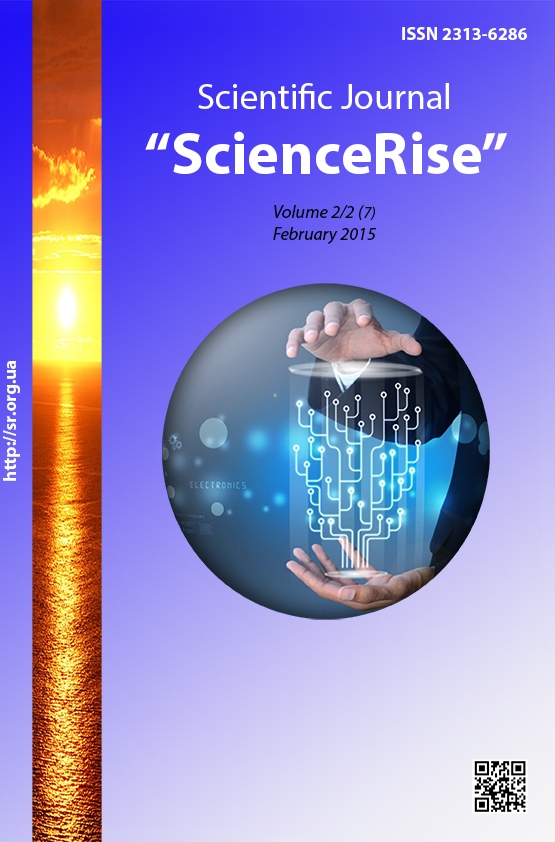Нестационарные режимы излучения пьезокерамического слоя, который контактирует с идеальной сжимаемой жидкостью
DOI:
https://doi.org/10.15587/2313-8416.2015.37412Ключові слова:
пьезокерамический слой, преобразование по Лапласу, электроупругость, акустическая средаАнотація
Данная статья посвящена нестационарным режимам излучения акустических волн пьезокерамическим слоем, который контактирует с идеальной сжимаемой жидкостью и ограничен жесткой поверхностью. Выполнена постановка и метод решения задачи. Задача решалась с использованием интегрального преобразования Лапласа по времени.
Получены формулы для определения физических характеристик исследуемого переходного процесса, таких как гидродинамическое давление, механическое напряжение, волновой потенциал, перемещения пьезокерамического слоя и электрического потенциала
Посилання
Verlan, A. F., Sizikov, V. S. (1978). Methods of decision of integral equalizations with the programs for COMPUTER. Kyiv: Scientific thought, 291.
Golovchan, V. T., Kybenko, V. D., Shulga, N. А., Guz, A. N., Grinchenko, V. Т. (1986). Spatial tasks of theory of resiliency and plasticity: In 6 vol.-vol.5. Dynamics of resilient bodies. Kyiv: Scientific thinking, 286.
Gradshtein, I. S., Rigik, I. M. (1962). Tables of integrals, sums, rows and works. Мoscow: Fizmatgiz, 108.
Grinchenko, V. Т., Ulitko, А. F., Shulga, N. А. (1989). Electro-resiliency. Vol. 5 is Mechanics of the constrained fields in the elements of constructions. Kyiv: Scientific thinking, 280.
Ditkin, V. А., Prudnikov, А. О. (1965). Reference Book on an operating calculation. Мoscow: Higher school, 466.
Pugachev, S. I. (Ed.) (1984). Pezokeramic transformers. Lviv: Shipbuilding, 256.
Slepan, L. I. (1972). Non-stationary resilient waves. Lviv: Shipbuilding, 374.
##submission.downloads##
Опубліковано
Номер
Розділ
Ліцензія
Авторське право (c) 2015 Александр Арташесович Бабаев, Владимир Федорович Кришталь, Тамара Николаевна Можаровская

Ця робота ліцензується відповідно до Creative Commons Attribution 4.0 International License.
Наше видання використовує положення про авторські права Creative Commons CC BY для журналів відкритого доступу.
Автори, які публікуються у цьому журналі, погоджуються з наступними умовами:
1. Автори залишають за собою право на авторство своєї роботи та передають журналу право першої публікації цієї роботи на умовах ліцензії Creative Commons CC BY, котра дозволяє іншим особам вільно розповсюджувати опубліковану роботу з обов'язковим посиланням на авторів оригінальної роботи та першу публікацію роботи у цьому журналі.
2. Автори мають право укладати самостійні додаткові угоди щодо неексклюзивного розповсюдження роботи у тому вигляді, в якому вона була опублікована цим журналом (наприклад, розміщувати роботу в електронному сховищі установи або публікувати у складі монографії), за умови збереження посилання на першу публікацію роботи у цьому журналі.

